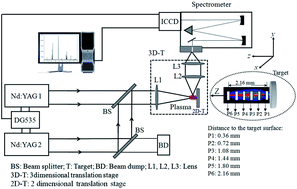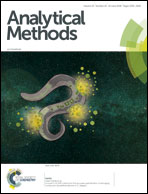Determination of the limits of detection for aluminum-based alloys by spatially resolved single- and double-pulse laser-induced breakdown spectroscopy
Abstract
A comparative study of laser-induced breakdown spectroscopy (LIBS) with spatially resolved single- and double-pulse configurations is performed to investigate the capability of simultaneous multi-element detection in aluminum-based alloys. The spatially resolved technique is used to obtain the LIBS spectra at 6 different positions along the plume expansion (axial) direction. The experimental parameters, including delay time, inter-pulse delay time and gate width, are optimized to achieve sensitive elemental detection. Under these optimized conditions, the limits of detection for Fe, Cu, Mg, Mn, Zn, Sn, Pb, Ni, Ti, Cr, Sr and Ca are obtained with the single- and double-pulse configurations. It is observed that an improvement of the detection capability is achieved in the spatially resolved double-pulse experiments. Moreover, the dependence of the limits of detection on the selection of atomic and ionic lines is discussed.



 Please wait while we load your content...
Please wait while we load your content...